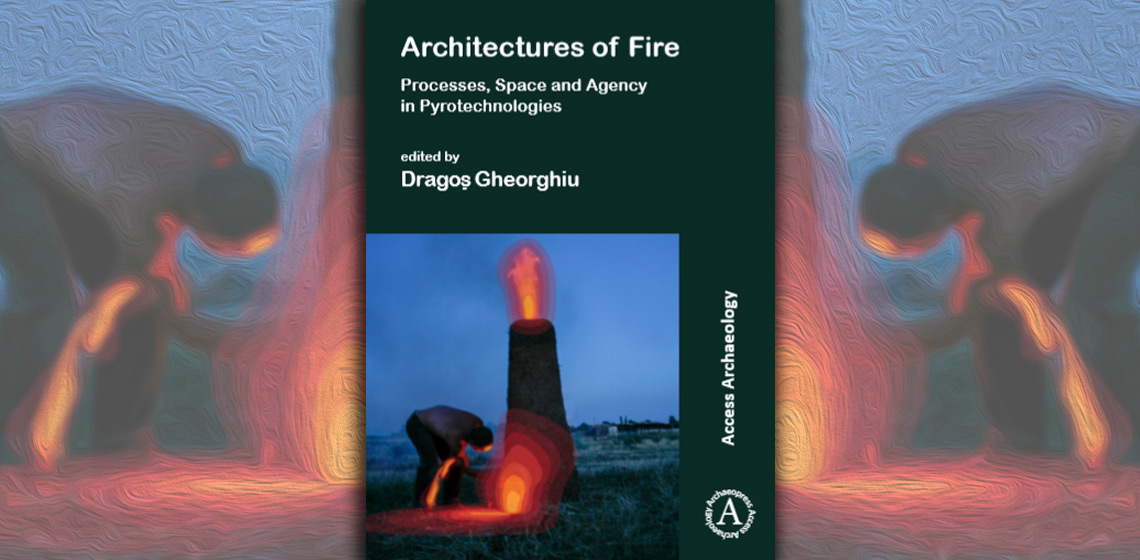The content is published under a Creative Commons Attribution Non-Commercial 4.0 License.
Unreviewed Mixed Matters Article:
Book Review: Architectures of Fire: Processes, Space and Agency in Pyrotechnologies edited by Dragos Gheoghiu

This book is a collection of six papers from the 2015 Annual Meeting of the European Association of Archaeologists session with the same title, co-organised by Dragoş Gheoghiu and Derek Pitman. The contributors to this work are a global team of thirteen archaeology researchers and experimental archaeologists who have studied different aspects of the use of fire and its influence on human architecture, technology, and functionality. This book comprehensively presents the intrinsic link between fire, pyrotechnology, fuels, material culture and Man using a diverse methodological approach.
Fire is ubiquitous to every day human life and encapsulates the mystical, bringing with it its own reverence and power in addition to its function as a tool in the creation of objects and manipulation of the physical space via light, heat, and exhaust. Through the need to cook, craft, create, and transmute thermal potential and efficiency, fire itself influenced the way Man created combustion features such as hearths, ovens, kilns, and furnaces. In turn, fire dictated how humans could move and operate within these functional spaces. This is thoroughly demonstrated by Architectures of Fire.
Architectures of Fire investigates not only the implementation of pyrotechnology for food processing and craft activity, but also the influence that fire and its behaviour in a number of combustion features has had on the development of technology and the way humans design and utilise their space. Where people stood in functional areas when using a furnace was dictated by the output of heat and the ventilation of exhaust, while fine work craft activities needed to be done near a lamp to utilise light. Fire was not only a vital component of crafting, it was also a major contributing factor to considering the way spaces were used and in the designs of pyrotechnology within functional spaces. Architectures of Fire even shows how the behaviour of fire influences how settlements and villages were created and subsequently razed to start over again.
The relationship between humans and fire is comprehensively demonstrated within Architectures of Fire. This relationship even goes beyond that of human beings and objects. Fire is present in all aspects of life and in the creation of most things. This collection of works demonstrates the amalgam of combustion, pyrotechnological tools, material culture, advancement of design, and the development of human action within space using a good mixture of experimental archaeology, field excavation, scientific analyses, and academic research. This work is a step forward in understanding the role of fire in the development and use of pyrotechnology and functional spaces, and how humans design and interact with them.
Book information:
Architectures of Fire: Processes, Space and Agency in Pyrotechnologies [Paperback], Dragos Gheorghiu (Editor), 2019, Published by: Archaeopress Access Archaeology, 108 pages
ISBN: 9781789693676

